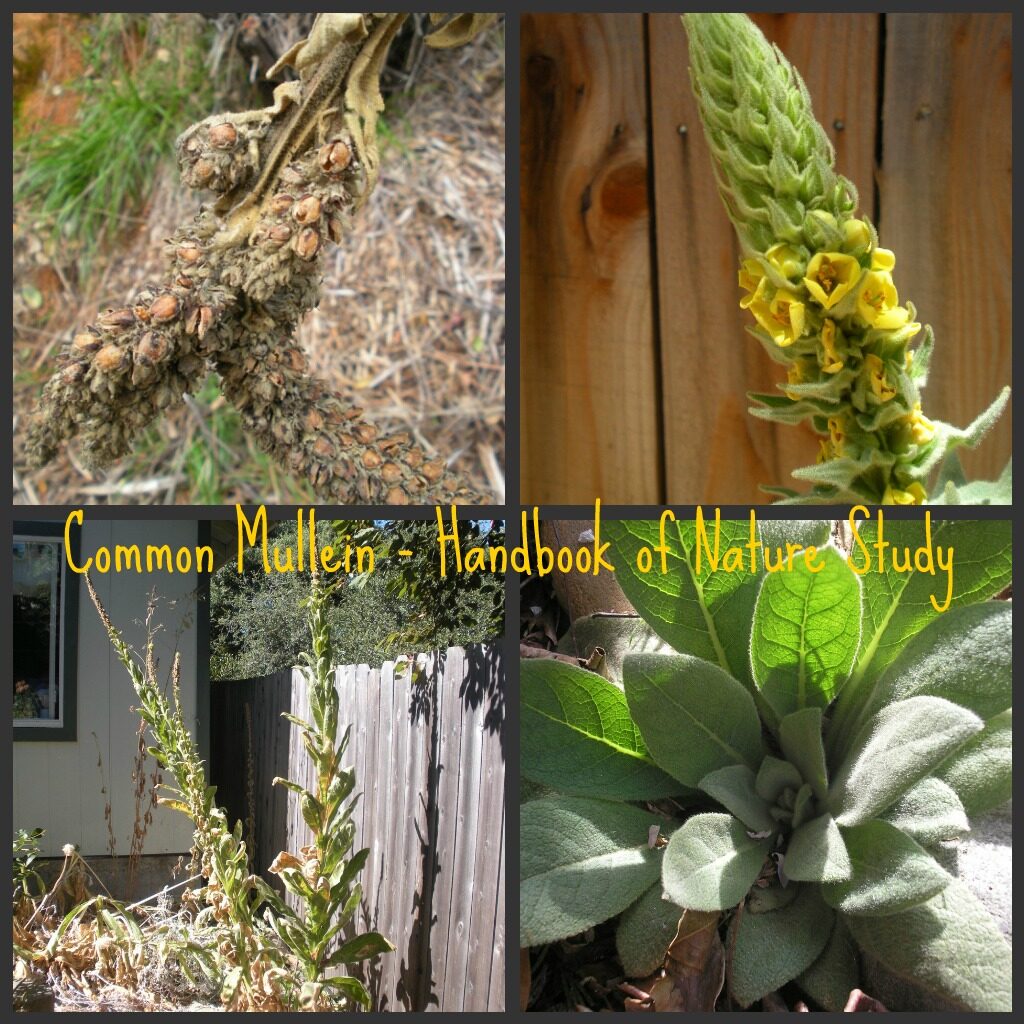
More Nature Study Book #3
Winter Weeds – Mullein Study
Inside Preparation:
- Read in the Handbook of Nature Study pages 537-539 (Lesson 146). Share a few facts and the images with your children so they can be on the lookout for mullein in your area. The distinctive rosette growth, the velvety leaves, and the flower stalk make this plant an easy one to spot, even in winter. (Ebook users have images included in the book and others can use the videos and the links in the Follow-Up section to view mullein.)
- Make sure to note that mullein is a biennial (takes two years to mature and produce seeds).
- Optional: Watch this short YouTube video that gives you an idea of what a winter mullein looks like: Common Mullein. I also made my own mullein video from my garden: Mullein in Autumn.
Outdoor Hour Time:
- Common mullein is found throughout the United States and Canada. During your outdoor time this week, try to find some common mullein to observe in its winter state. First year mullein will be look like green, soft, rosettes. Second year mullein will be the brown plant with the flower stalk. Observe how the leaves grow out between the two of the lower circle, that the upper leaves are smaller than those below, and that the upper leaves do not lie flat.
- Observe the mullein plant, looking at ways it survives the winter cold, rain, and snow. Make note of the plant’s location and plan to revisit it over the next year in each season.
- Alternate winter weed activity: Find and observe any winter weed in your neighborhood. Even if you have snow, see if you can find a part of a plant sticking up out of the snow and make some observations. You may want to click over and read my Winter Weeds challenge for additional ideas for your family.
Follow-Up Activities:
- Complete a follow-up nature journal entry or notebook page for your mullein observations. Ebook users choose from the Common Mullein or Winter Weed notebook pages.
- Advanced follow-up: Research the mullein plant online and find how it is used its traditional, medicinal, and health uses. Try this LINK or this LINK (this one is excellent!). Ebook users: Complete a notebook page.
- Advanced follow-up: Research annual, perennial, and biennial plants on Wikipedia. Ebook users: Complete the notebook page with a summary of the information and give examples of each kind of plant.
You can view our winter weeds study here: Winter Weeds – On-going Study
